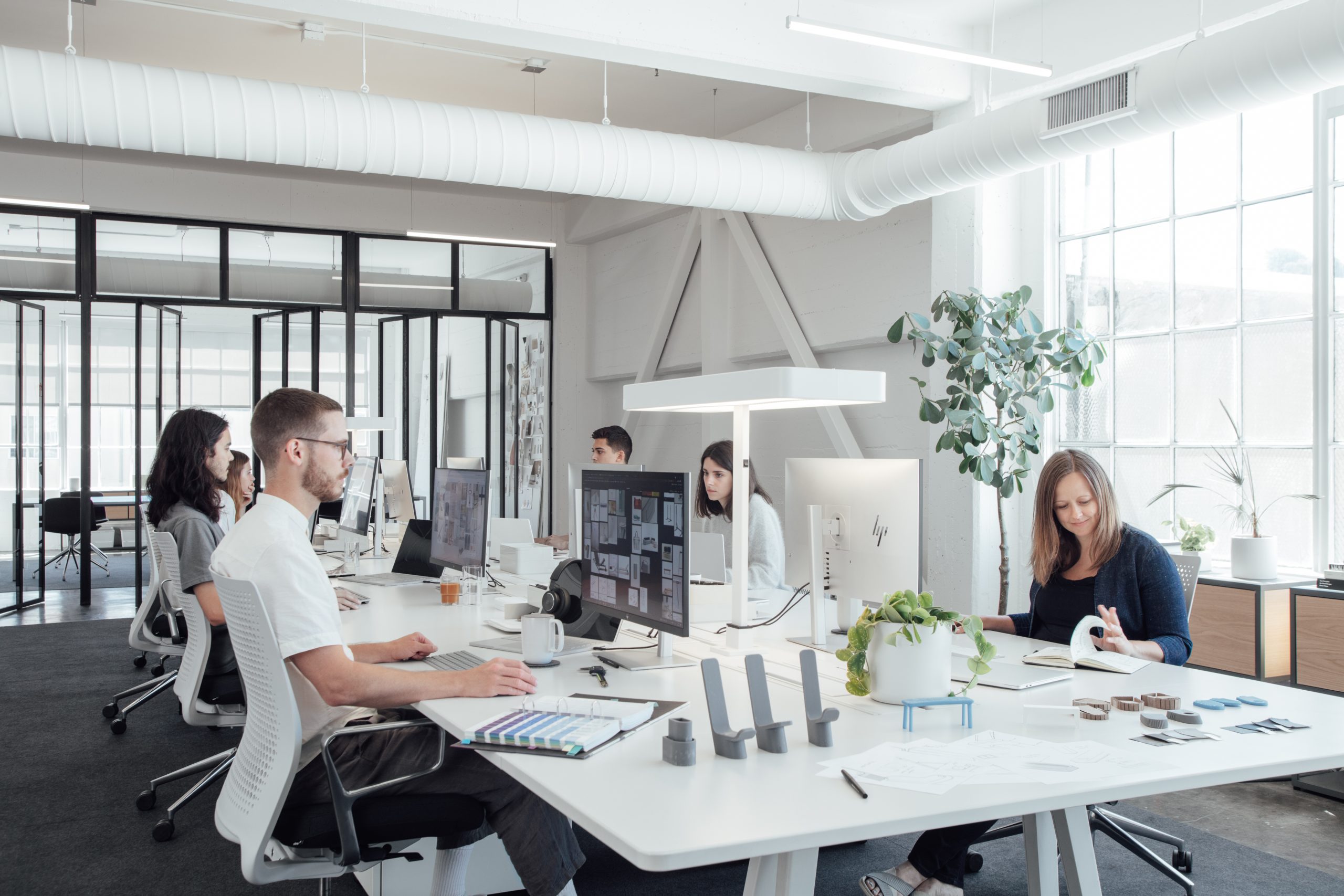September 5, 2024 • Posted by Design Bay Area
Do designers even like startups?!
Tyler and Kate of Baukunst, and Nichole and Vicci of level, have worked together for a number of years in various capacities, but never before have we discussed the realities of the industrial design and startup relationship.
The following is a (somewhat edited!) transcript of a fun conversation kicking around the highs, lows and everything in between within the context of hardware design over recent decades.
We hope you enjoy it as much as we did!
TYLER:
Maybe an interesting jumping-off point is, do you even like working with startups?! Or would you rather just work with big companies that “know what they’re doing”?
NICHOLE:
Such a great topic! We just had a big-corporate client meeting this morning that was intense—all the different stakeholders we have to jump through hoops for, all the different content we’re having to create for marketing teams and brand people, and then the manufacturing side of this massive global entity.
With the startups, you get to the founder—to the decision maker—without the chaos. Startups have their own chaos, but I appreciate being able to get right to the top and right to the point.
VICCI:
With startups, for every 10 conversations there’s 1 that’s interesting, and then only half of that gets off the ground. But there’s real passion and innovation that happens in those spaces. We’re lucky that our forte is working with innovative technology and shaping that into consumer hardware. Not all industrial design teams focus on that.
But because of Nicole’s pedigree—where she’s come from and what she’s put out into the world (FitBit, HTC Android phones, etc.)—and now what our own team has successfully supported to market, the majority of what comes to our studio is state of the art. So our team ends up being at the forefront of what’s new in technology and how consumers’ lives are being changed for the better. And we’re shaping it. So, yes, we do love startups!
NICHOLE:
Look, we also absolutely love working with the big corporations. Their teams are smart, experienced and intrinsically understand our approach. However, although we are grateful to have had luck with a few of our projects for the Fortune 500s getting to market, the reality is the majority of that work doesn’t see the light of day. It provides internal inspiration, or helps nudge marketing directives, and then it goes into a vault.
With startups, they have to ship the product. So there’s a much higher chance that your work is going to get out there. You’re starting fresh, from nothing, so you really get to do work that’s so much more transformative. Because most of the time we’re creating something that’s never existed before, it’s a blank canvas. From scratch, we’re figuring out how people are going to use this thing and how they’re going to experience it for the first time. It’s creative and fun.
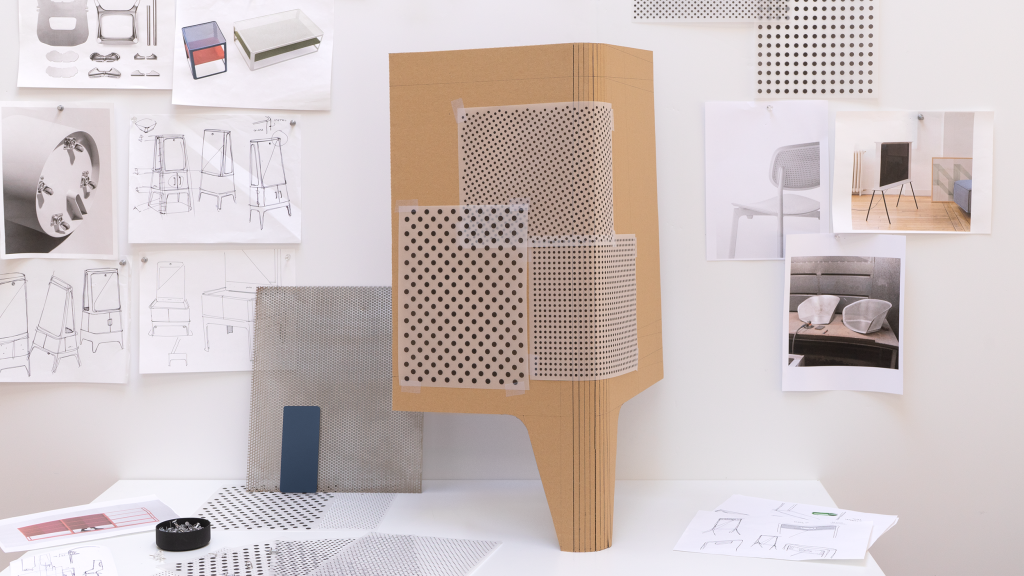
Photo: Tempo explorations
TYLER:
How did some of the old startup stories turn out to be good for level too? I’m curious if there was somebody small you took a chance on, who ended up becoming a big client later on, or a showpiece that got you other work in a similar category, translating into momentum for the business?
NICHOLE:
We had some pretty big wins early on and across a diversity of projects which helped us a lot. It’s so important for consultancies to prove they work well across a variety of spaces.
Tempo was one of our earliest claims to fame; they put us on the map as a design studio when they launched in 2020. In-home fitness was blowing up and we did something that was very different to the competitors. Ours was an entirely new take on the challenges each player in the space was facing. It got us full-page spreads in Fast Company and won numerous awards for the design and for our studio. In 2021 Fast Company pegged us as the 3rd Most Innovative Company in Design after Adidas and Google. That coverage led to a lot more clients, in totally different spaces, seeking us out.
Then there was AliveCor. It’s not as mass-market because it’s MedTech, but in Silicon Valley it’s definitely a respected and well-known player in early AI.
Those 2 projects launched around the beginning of the pandemic. Remote health monitoring and in-home fitness were the 2 categories that were really taking off during that time, so that set us off. While many studios were nervous in the early days of COVID, we were deeply grateful to be getting press, awards and inbound traffic.
VICCI:
Winning awards makes the studio searchable, right? That’s been huge. Most of what comes to us is either through word of mouth or people searching “Bay Area industrial design”. Sometimes they include the keyword “women” at the end! The big successes, like Tempo, AliveCor and Nex Playground—which is doing super well this year—all help build momentum behind the studio.
Every design agency I’ve worked with has grappled with the reason behind entering competitions. Is it all ego? Is the cost and time worth it? At level, we’ve found the investment not only demonstrates to our clients that we’re proud of our work, and to our team that we believe in their work, but also that if you’re successful it truly can give your business a boost, gaining traction in the press and becoming a beacon for new talent.
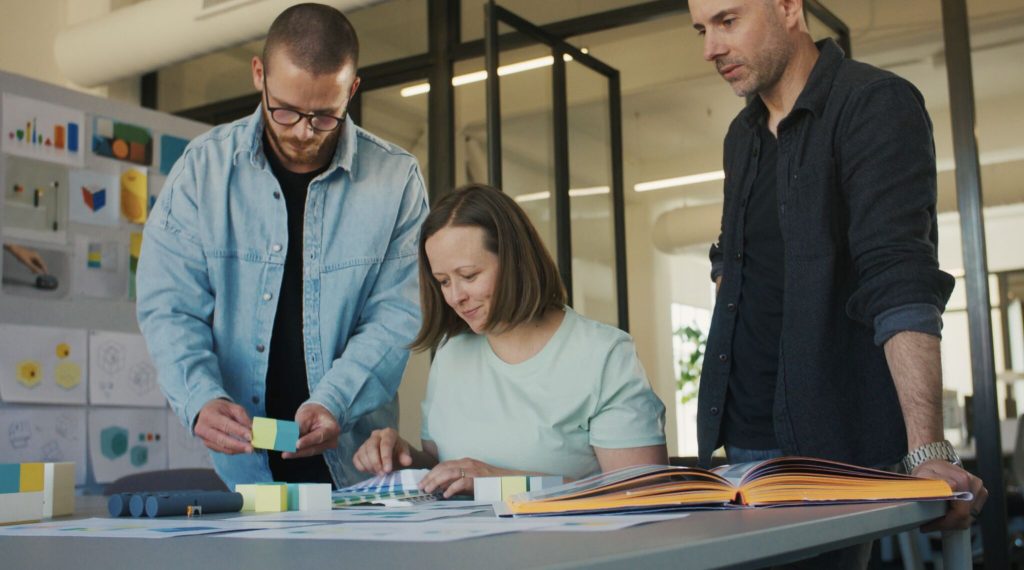
Photo: Nex Playground CMF review with Jorge Fino VP of Design at Nex
KATE:
I came to San Francisco in 2014 and started investing in hardware startups in 2014. That’s exactly 10 years ago. The temperature on hardware startups over the course of those 10 years is almost a perfect parabola! They were not hot, then they got really, really hot and then they cooled off. Through the course of that time, I feel like there are these different archetypes of founders or founding teams in the hardware space.
There was one version who knew nothing about hardware, but did know how to dream for a customer experience, saying, “Oh, just trust me, we’ll build it” without really thinking about how it was going to get built. So, there was this overpromise on what the product could possibly be.
And then there was the deep technologist, where it was all about the tech in the hardware with very little attention paid to user experience, or how it would look or feel to your average consumer—disconnected from how people would use this product in their everyday life.
And, honestly, I think that both of those types of startups really struggled to ship products that could scale. They struggled to ship things that people really liked. And, I would say, often missing from both of those types of companies was great teams who could balance both the design feasibility and manufacturability. The ability to make it.
Studios, like yours, that we’ve seen thrive even after the hype cycle, have been designers who have respect for how things actually get made and engineering firms who also respect design. It’s really that integration of design and technology coming together. You really work with engineering teams. You think about the soup to nuts. I wonder if you could speak to that history and the heritage that you have as a design firm?
NICHOLE:
The 7.5 years leading up to starting level I worked at One&Co, which was then purchased by HTC. I spent at least a week out of every month, sometimes more, in Asia—either in Taiwan or China—and in factories. So, not just creating the design vision, but actively working alongside everybody responsible for building that vision, those who were getting it made and shipped. I then had to go and sell the product into our various market channels and retailers.
Having had that experience, and being answerable to that spectrum of responsibility, I felt like the majority of the work that we had done in my previous consulting experience was very naïve—we just used to make a bunch of shapes! We didn’t think about how we were going to make these things. We created pretty pictures and handed them over the fence in the hope of it coming back looking good.
For me, beauty happens when, from the very beginning, you work with great engineers and great manufacturers to gain foresight and solve problems.
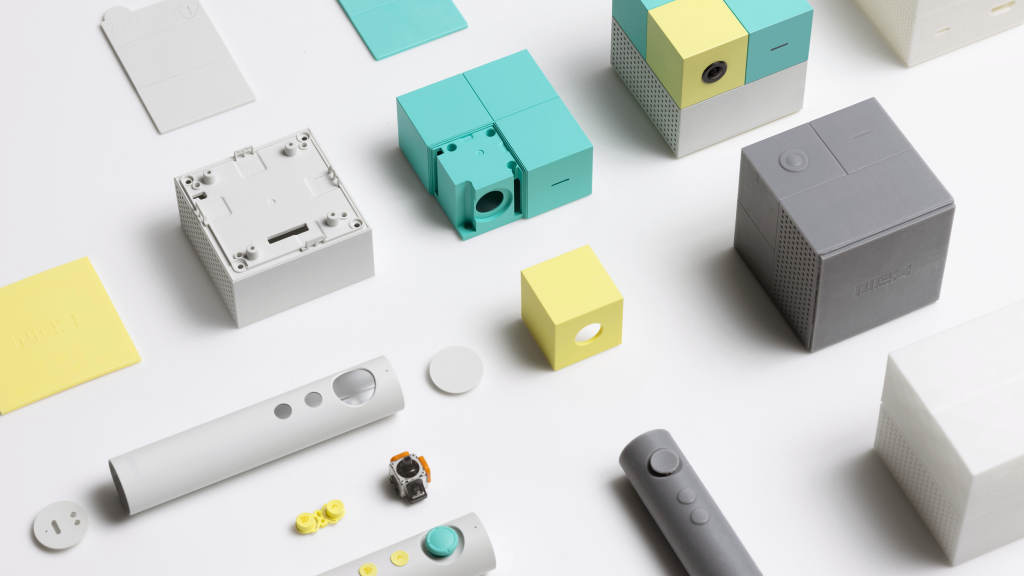
Photo: Nex Playground production part review
KATE:
And a big piece of that, that really speaks to me, is what is pragmatic to do on a startup budget, right?
There are things that are possible for big companies to do because they have their supply chains and they have leverage with MOQs and components. But startups have to think about different constraints. When you’re shipping your first 5000 units, it’s different, right? Like Dandi Fertility, whose 2 co-founders had never shipped hardware, but they really understood the user and they really understood what the user experience needed to be. You guided them to make something beautiful that they can realistically ship. And it’s going to have good margins!
One of the things that I often get asked by startups is, “Do you have a design studio that you could recommend?” or “What makes a good design studio?”, and there are certain design studios that are good at working with startups and there are certain ones that aren’t. They need to understand how startups work, what their budgets are, what those constraints are. We think there’s a nuance to how level works with startups, especially with teams that haven’t built hardware before. You take people on that journey.
VICCI:
Unfortunately, in our past lives, we’ve both seen a number of really promising companies not make it because they burn through cash flow before they hit market. From my side of the table, I could often trace that back to the first conversations, where I’d witnessed a lot of hand-waving around the creative process or a lot of “Yes, of course we can” in response to ill-informed requests by the client, because there’s a want to just land the work. So many of those projects turned sour because there hadn’t been the conviction on the studio side to say ‘no’ and explain why a request or expectation was unreasonable. ‘Sales’ has a lot to answer for in that respect.
At level, we strive to educate the clients we work with and to be transparent right from the beginning about our strengths and boundaries. We talk through and illustrate what our process is, what the deliverables are, what you’re going to have in your hands, and what we’re responsible for versus what partners are responsible for and why. And we’re very happy sharing introductions to partner teams before anything is even signed because, ultimately, if our clients don’t know what they’re getting into, it’s often all for naught for them and us.
Ultimately the design team here wants to get product into the world—it’s pride in our portfolio. We’re creative people. We want to see the things we design exist and be enjoyed. Clients don’t necessarily consider that key portion of the relationship. Yes, we’re a service business, but it’s not about the money. If you work with a great team, they should be on your side in everything they do, because they should want it to succeed as much as you do. Our feeling is that if we don’t think we’re able to achieve greatness with a client, we shouldn’t be doing it at all.
So, it’s education and it’s transparency. And building respect and holding boundaries for the creative process.
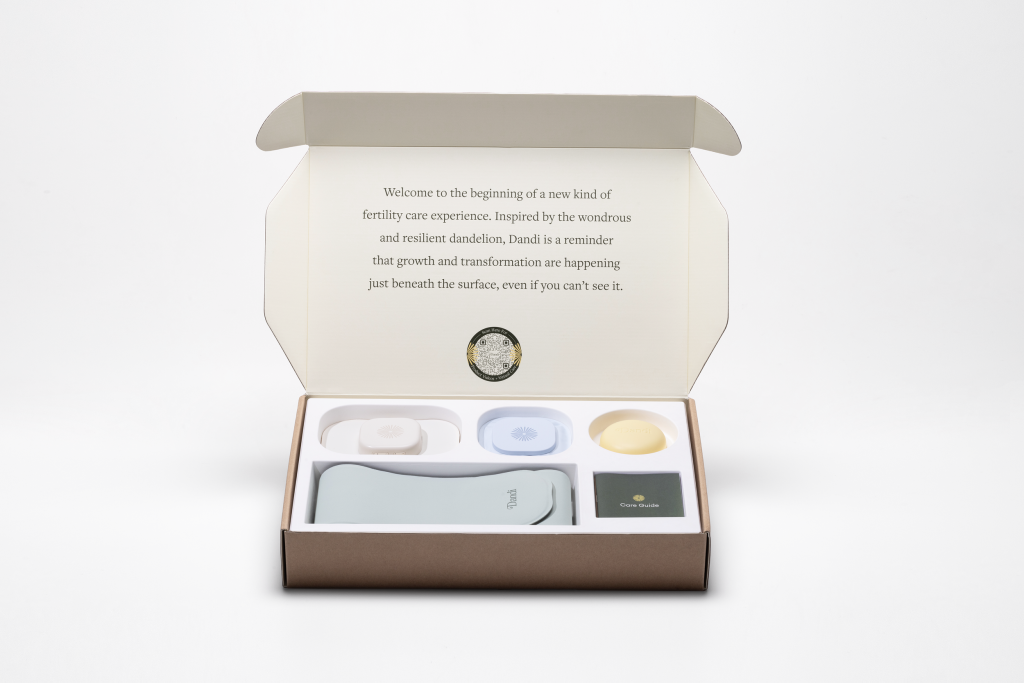
Photo: Dandi IVF Care Kit
NICHOLE:
Our approach is also a reaction to what we saw going on around the Bay for too long—all the horror stories you would hear about a startup that’s raised their first $800K and they go to an industrial design firm and spend $750K, thinking that they’re going to get something ready for manufacturing, and then they come to realize that there’s a whole Design for Manufacturing process that they now don’t have the money for. They just go belly-up.
TYLER:
And, in the worst of those cases, some people just get a PDF at the end of that, right?! It’s not even an actual design—it’s like, “Here’s some concepts and renders”.
NICHOLE:
In those instances it’s somewhat the design studio’s fault, but clearly the startup also just doesn’t know enough to understand that it’s not the right time or place for them to be spending that $750K. We are informed so we’ll be explicit with clients, even turning them away: “You need to pass these milestones first, it’s not the right time for you to be spending money on us”.
And that’s not always easy in the financial climate that we’ve been through! But we also think it’s the right thing to do, to just say, “No, we’re not going to take your money yet because you’re not ready for this”. Otherwise it’s a disservice to us all.
VICCI:
All the above said, we’re comfortable being flexible where it makes sense. We can take bite-sized chunks out of the scope to get clients to a place where they have compelling initial visuals, because that’s what they need for storytelling to gain investor buy-in. We don’t do that for everybody by any stretch, but if we believe in the client and believe in the project then we’re happy to have those conversations and take things slow.
KATE:
That’s something that I’ve seen shift and change over time. Now, even at the Pre-Seed or Seed stage, having an industrial design direction can be important communication to investors or to other people that you’re pitching to, because for those who aren’t designers or the founders it can be hard to see through the idea, to what it could be. So there can be value in involving design very early to help externalize the core idea. And then communicate to investors that this is not necessarily the thing that we’re making, it’s simply a conceptual thrust so we can raise some money, to be able to move into a more thorough design process.
I’m glad that we moved away from the era of, “Here’s the sketch, now go raise $2,000,000 on Kickstarter” without doing the development part. It’s very healthy that we’ve moved away from that.
VICCI:
Tempo is a perfect example of this, where we were able to go through a first exploration phase to get them some visuals, which enabled a round of funding, which in turn enabled a prototype build. That prototype was a key for the rest of the raise, which carried them through production.
This baby-steps approach can be important, especially when you’re talking about new technology and new uses for AI, etc. Being able to visualize intent is super helpful. The creative strategy we share as part of our deliverables, we also see clients using to communicate potential to investors.
We’ve got a client, Percy, who we’ve been working with in this way, even helping with the pitch deck visuals to assist with storytelling. Percy needs to live in your room. It ‘watches’ you while you sleep! For an audience to visually understand that there are ways to design it without it being intrusive, is core to buy-in.
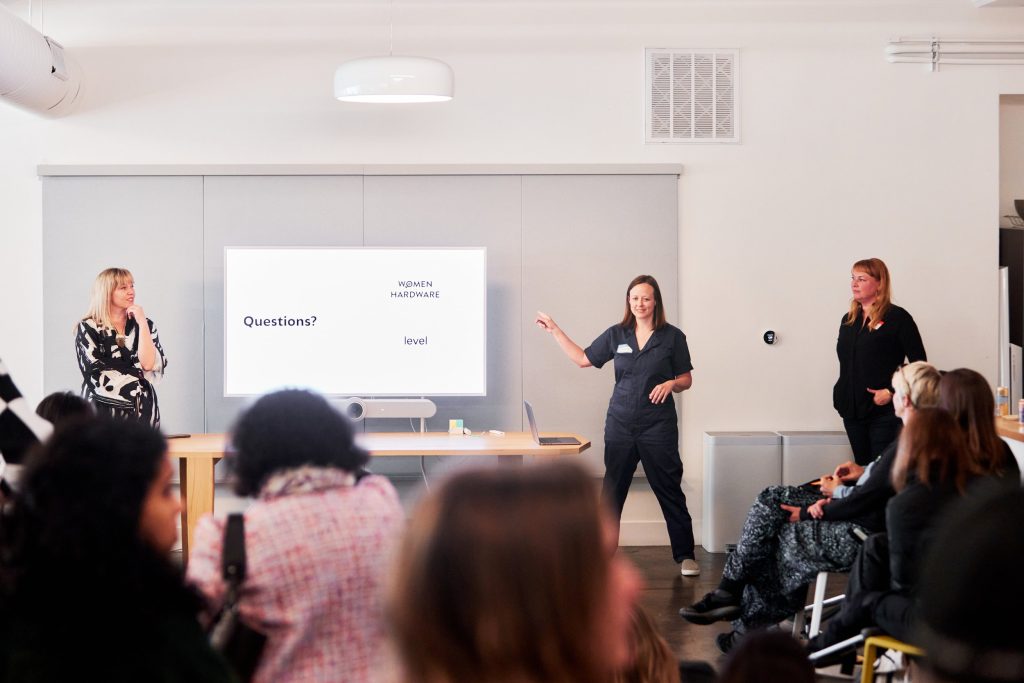
Photo: Kate, Nichole and Vicci at a Women in Hardware event hosted by level. Kate founded Women in Hardware in 2015. It is now the largest and longest running community of women & allies in the hardware ecosystem
NICHOLE:
There’s something to this bite-sized-chunks approach. From the very, very early stages it helps build bonds. We understand what the founder is going through, we see how the mission sometimes changes course, and with all that background you build relationships.
It means the partnership has real strength when you finally get to the formal design process. And there is this celebration, for everybody, once they’ve got the funds to be able to write a check for the full scope of work. It’s what gets me out of bed as a designer, to be able to help support founders through all of those steps. The ups and the downs.
We’re entrepreneurs too, we run a business, so we know how hard some moments can be. But when we’re by their side throughout, somehow it makes the design work better. We’re able to be more rational, because of the history and the clarity of the purpose. We know each other, we’ve gotten through the dating phase and we know how to get the work done right.
VICCI:
I will say, for the consultancies, early involvement isn’t always the most efficient path from a business perspective!
There is a lot of time and knowledge given to these individuals before the larger scope can be tackled. But that’s when you rely on your instincts and are selective. Nichole and I have done this for a long time! When we have faith in someone, and see the value in the hardware opportunity, we would rather take that hit and build that trust.
TYLER:
For us too, the goal is not efficiency. It’s getting it right. Startups are messy and iterative. And you don’t want to have the lowest cost, fastest path, to having one shot at something. You want to explore options and get it right. That’s important for people to understand. It’s nice that you have that process.
KATE:
It’s attitudinal. As VCs, we’re always looking for the kind of founders who are looking for the partners to help them do great work, not the kind of people who are just going to try and get the most for the least. Creating successful outcomes is not an extracted process, where you throw some money at an agency and expect them to bring all the ideas. That’s not how great work happens.
That collaborative attitude that you were talking about is how the best work happens. Especially in startups, where so much is changing. It’s never straightforward, because you’re often designing an experience for the first time. You guys are going to go on that journey, learning about their customers along with the founders.
NICHOLE:
And when you build the relationship from the foundation, once they grow, you’re still able to tap the top to make the right call on compromises that come up. Like when Tempo got to the point where they had a few hundred employees, I still could text Moawia and get the decisions made. The smaller budget projects that we took on in our early days led to numerous different projects during the pandemic, when it was really hard to find new business. Essentially, that basis of establishing a relationship with our clients really helped keep us alive at a very vital point for the company.
KATE:
Ultimately, you’re talking about trust building. For founders who really value design, having a direct line with the head of the studio, and being able to be at that level of tight communication, matters. And those founders are the ones that tend to be able to bring great consumer products to market.
VICCI:
This confidence that we build together over time also enables us, as a creative team, to come in when tough decisions are being made and ask for that trust. Once we’re in Design for Manufacture phase—where the reality of final MOQs and COGs come up or suddenly a component can’t be sourced and it’s going to be much more expensive—we need to stay on the right path, and oftentimes that means fighting for seemingly small elements of the design intent. But those details can make or break the user experience and therefore the ultimate market response. Building trust early means our voice is taken seriously when we need to push for something that might take a bit more now but will be critical to long-term success.
NICHOLE:
By these later stages, we can read our client’s mind. We know what lights them up. We know each other.
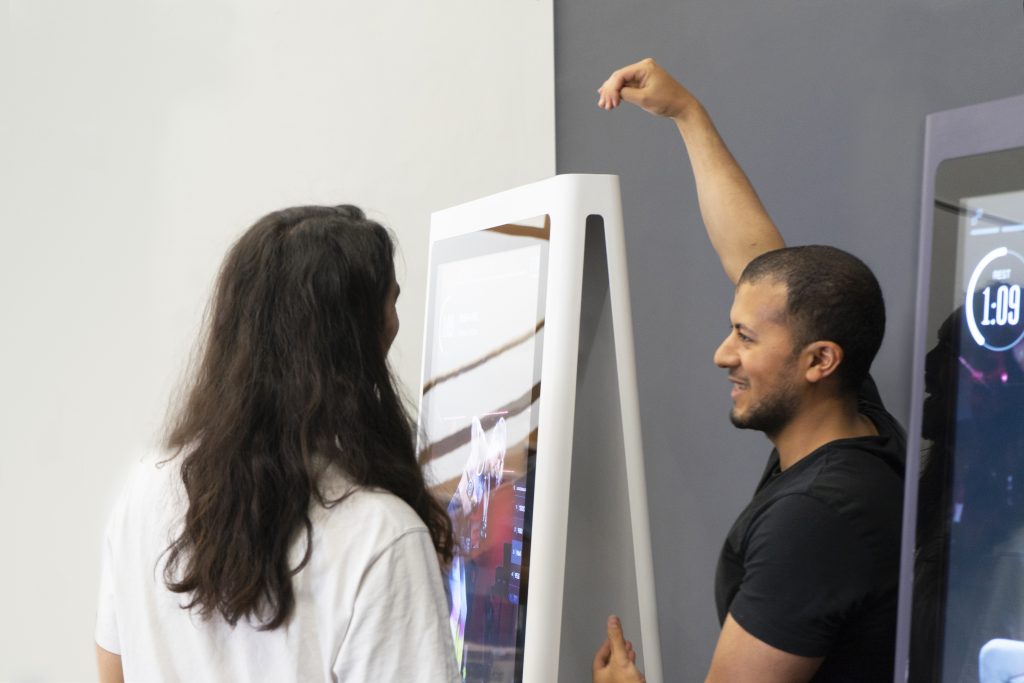
Photo: Tempo prototype review with Moawia Eldeeb
TYLER:
As hardware investors, usually the “why” behind a company being interesting is despite the hardware, not because of it. The most interesting companies don’t have business models where they’re just making some points of margin on a 1-time sale of a hardware widget. It’s really about how those products become living systems, like software services or content platforms, that become long-lasting, living things in people’s lives.
Since I’m a cheerleader for that world, I think there are a lot of good reasons to support a healthier consumer culture and incentivize people to make physical things that last longer, instead of selling a new version every year. But where some of the traditional product development process becomes hard is when we’re working with a young company at the very beginning, and we’re trying to validate the service. We’re trying to pilot users that are living with products for 3 to 6 months to see how often they’re using them, how much they’re willing to pay for the service the product delivers, etc. We’re getting that retention information.
So you need a hardware development process that matches that and is happy to deliver something beyond a breadboard but that is also not contrived or reflective of any greater design intent. It’s almost a throw-away design. Do you have a version of your process that fits that Proof of Concept phase for a startup?
NICHOLE:
Absolutely, though it can be expensive because producing 5 to 50 of a thing means you’re essentially in a custom-build situation.
VICCI:
We’ve got brilliant prototyping teams who’ve done exactly that at different resolutions of fidelity for our clients. With Percy, for example, we need to get 50 to 100 done for the next couple of years of research and testing, and then we’ll scale from there.
So, we did these great renderings for VCs illustrating what it may look like in the future, but for the next 2 years it may be produced in grays because we’re using off-the-shelf materials. And it may be 3D printed. 3D Printing can be a super tool for this kind of stage in a process.
NICHOLE:
We sometimes lean on our model shops to work out early engineering whilst also meeting low-volume manufacturing targets. They can hit that sweet spot where something still feels “consumer” enough for testers to be willing to put it in their home, or have it in their life, for a few months as the research is happening.
Model shops are fast and it can be effective for budget—although a handful of models may come at a high cost per unit, if they’re also working out engineering challenges you get bang for your buck.
KATE:
One of my other observations is that 8 to 10 years ago hardware was hardware, and now I feel like hardware is described as Digital Health, Climate Tech, Consumer Products, etc. It’s splintered into different verticals, which seems more appropriate—that it aligns with the context that it lives in. It’s like the set of problems that they’re solving. It makes it more about how the hardware happens to be the way that this solution is getting delivered, as opposed to the hardware itself being the defining feature of the business.
I’m curious, when you look at the different markets or application areas where you’re seeing startups building hardware, are there certain pockets of categories, user groups or needs that you’re particularly drawn to working on right now—where you think there’s a lot of opportunity?
NICHOLE:
There’s amazing work in Med Tech, and our foot-in-the-door with AliveCor helps us to be in a sweet spot for that.
VICCI:
We’re also very interested in EV and Climate Tech. There are obvious reasons for that—like the fact that the world needs them!—but there’s, of course, a lot of innovation happening in those spaces, with new teams splintering off from recognizable organizations, who are now doing their own thing with deep knowledge and a shift in perspective. For us, those are meaningful categories to be in conversation with, because I believe these new teams are going to shake out the next generation of revolutionary solutions over the next decade.
And, inherently, those teams want to design and build more sustainably. They’re considering better materials, smarter construction, repairability, circularity, etc. Those design potentials are in play automatically with these clients because they’re part of the greater ethos of trying to change how we consume.
Our industry largely acknowledges that we must adjust how we realize the creative vision in order for us to cut back waste and pollution. Our studio wants to push forward this evolution of industrial design. And with teams working in Climate Tech we don’t need to fight for it, it’s all part of the same goal.
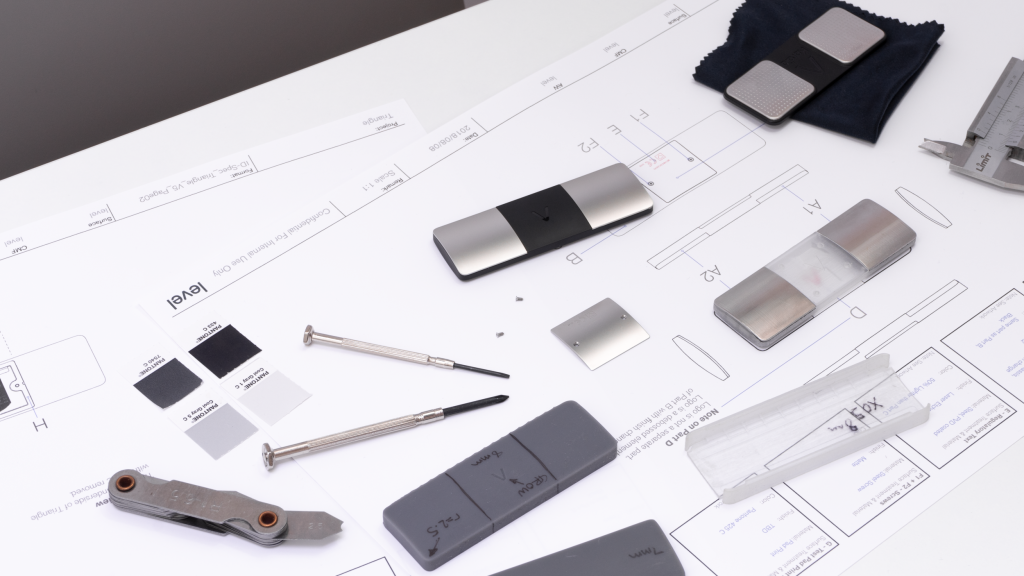
Photo: AliveCor assembly and CMF review
KATE:
One of the trends that we’re seeing is decarbonization in the home. The homeowner is now in a position where they’re making decisions based not only on the product’s environmental ROI, but on how easy it is to install, how attractive it is, etc. So we’re starting to see these products that now need to be great consumer experiences in order to be selected to decarbonize homes.
There’s all kinds of other pieces that are in play with that—we have massive government incentives and interest from utilities. It’s an exciting time to be thinking about where climate and consumerism come together, where the consumer’s taste and great design can move the needle on decarbonization.
NICHOLE:
I was just reading a story in the New York Times explaining new laws being introduced in many cities, including New York, in which buildings have a minimum temperature that they can drop to in the winter and they’re now looking at setting a maximum temperature in the summer. Which is huge because it’s never been done before but, as the climate is getting hotter, they may start implementing these kinds of strategies and policies for public health and safety. California just passed legislation protecting workers from indoor temperatures. So what are landlords going to do? What are the building owners going to do? They’ll need to retrofit all their spaces to be able to meet these requirements.
In San Francisco, we’ve had these problems. I’ve lived here for 2 decades and for a long time I had never felt the temperature over 100 °F in the city. But I have now. I required our landlord to put in HVAC when we moved into this office because I had days in our old space that were so hot that the team couldn’t work.
Air conditioners, for the most part, are pretty ugly! The majority of aesthetically appealing options are big investments to install. There is a need for new, equitable solutions that are not total eyesores or impossible to live with.

Photo: level design team David Roseberry, Marion Decroix, Justin Mamaril
TYLER:
Totally. It’s coming for us.
Maybe one last thing to restate, which I feel comes through in this conversation as a whole. We’ve talked about why startups are good clients, but I wonder why level is good for startups?
VICCI:
We’re honest. I hope people draw that from their first conversations with Nichole and I. We’re here for you and we want to help you achieve your vision. We’ll be transparent in how we can achieve that, and about what we feel is the best path to get you there. And, frankly, whether or not we’re the right fit for you.
On a human level, that is one of the key things that we offer: we’re very happy to discuss our strengths and limitations, and where our lines are drawn.
We talk to clients about the reality of their situation, how much money they’ve got in their pocket, how far that’s going to take them, and therefore what they should be spending it on at any given moment. I cut my teeth at Turner Duckworth, a leading brand identity agency, and have now been working in industrial design for over 12 years. Nichole and my combined experiences enable us to educate people broadly on some key pitfalls—where to put the budget, the reality of timelines, what to prototype, what kind of engineering they should have and at what point in the process, the importance of Design for Manufacture, etc.
We’re all about honesty, experience, education, collaboration.
NICHOLE:
And we’re pragmatic. When I review designs with the team and with clients I talk about the potential of, for instance, an extrusion and how that’s a pretty cheap tool, or if we do something that’s bent sheet metal, how we could do things without having the upfront tooling cost. We’re sensitive to how we get things made.
And, as Vicci said, there’s the amount of time that we spend talking with clients about the process, and their ability to lean on us for all kinds of help before we even kick off industrial design. I don’t know if every studio team volunteers their time to that degree.
VICCI:
Agencies need to make sure they’re balancing pro-bono time appropriately against the potential opportunity and what the project could mean for their studio. Nichole and I have those conversations continually, asking ourselves all the important questions: What is it? Do we believe that this product needs to exist? Who does it serve? Do they need it? Is it an interesting portfolio piece? Will we broaden our own experience?
As a design studio, ensure you feel good when making the call as to how long you go without getting something signed. We’re all running businesses, after all!
ABOUT level + baukunst
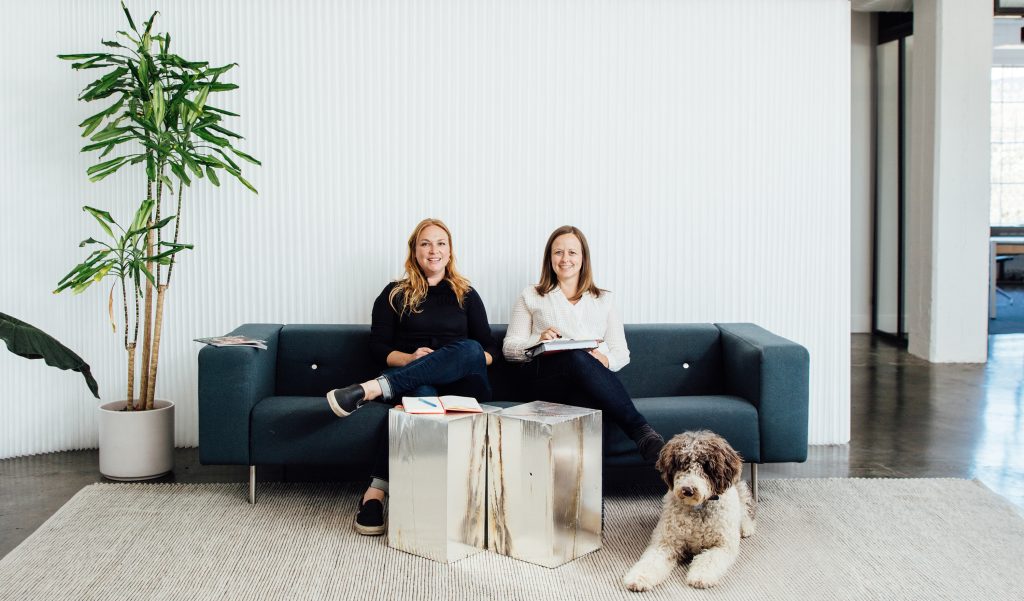
level is an industrial design studio in the Mission Creek area of San Francisco. At almost 8 years old, their work spans the likes of Logitech, Microsoft and Google, as well as category-defining companies such as Tempo, AliveCor and Nex. Nichole is the Founder + Creative Director. Vicci is the Chief Operations Officer. Follow on Instagram and linkedin.
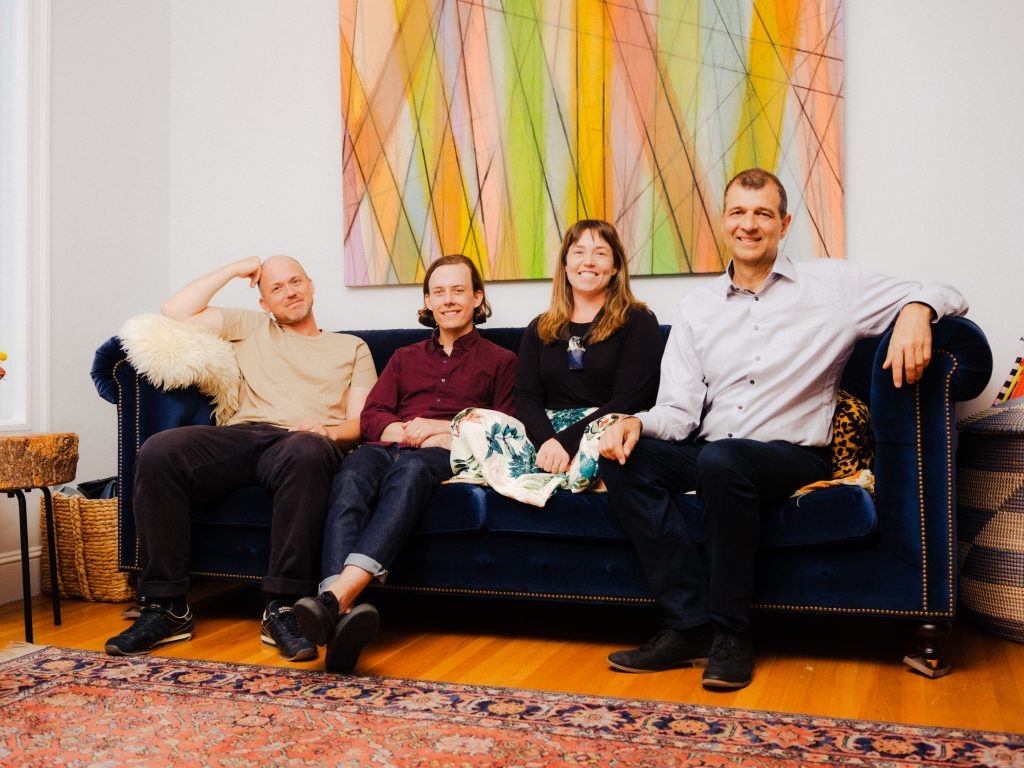
Baukunst is a collective of creative technologists advancing the art of building. Their inaugural $100M venture fund is dedicated to leading pre-seed investments in companies at the frontiers of technology and design. Kate and Tyler are Co-Founders and General Partners, alongside Axel Bichara and Matt Thoms. Follow on Instagram and linkedin.
